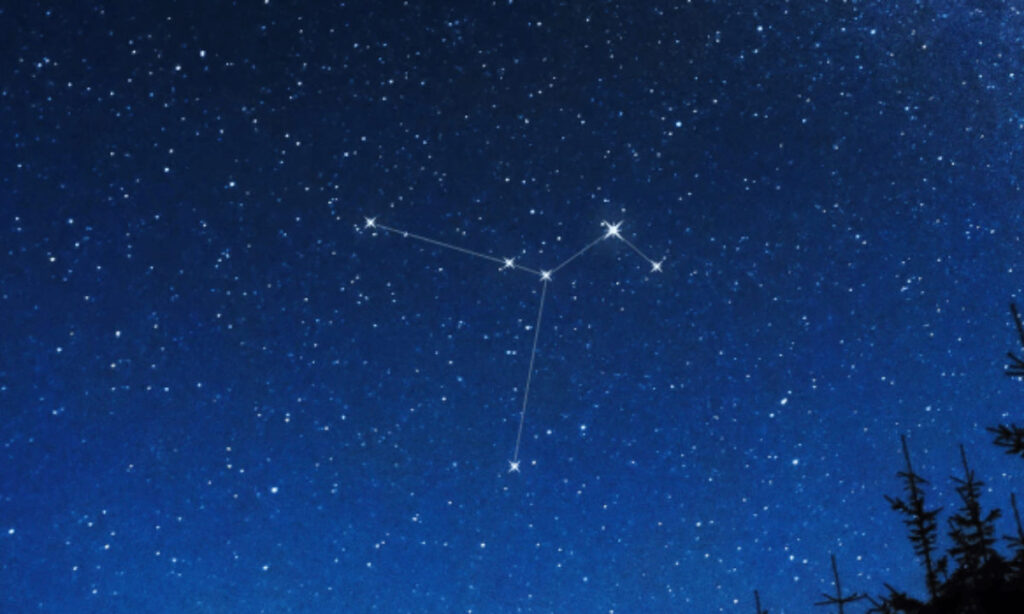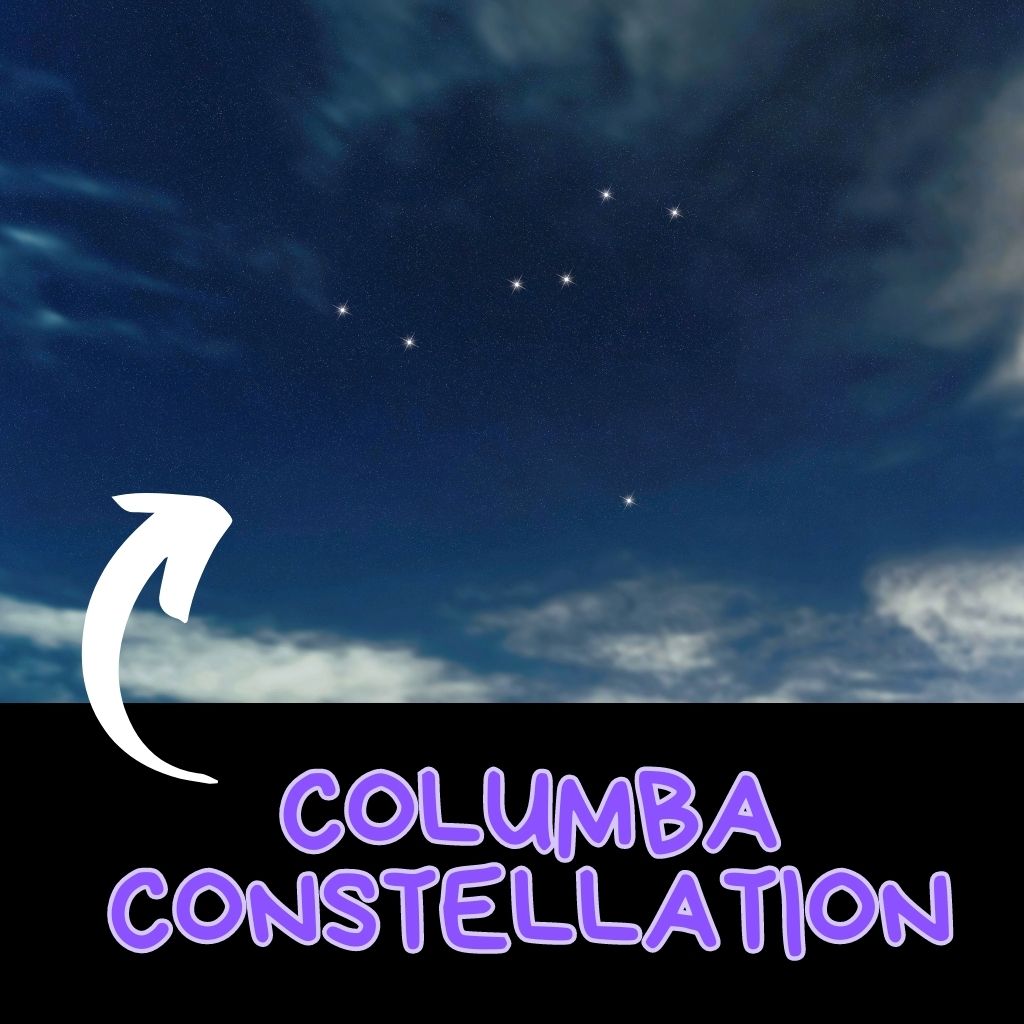This site contains affiliate links to products. I may receive a commission for purchases made through these links.
The night sky has fascinated humans for centuries, and one of the most intriguing parts of it is the Columba Constellation. While it may not be as well-known as some of the other constellations, many interesting facts about Columba are worth exploring.
In this article, we will take a closer look at some little-known facts about the Columba Constellation that will pique your interest and deepen your appreciation of this unique part of the night sky.
1. How did the Columba Constellation get its name?
Petrus Plancius originally discovered and named the constellation Columba Noachi. This was to commemorate the dove that Noah sent out from the ark in the biblical story of the great flood.
The dove returned to the ark with an olive branch, which was a symbol of hope and peace.
2. What is the meaning of the constellation name Columba?
Columba is a Latin word that means dove or pigeon. The name Columba refers to this bird, a symbol of peace and hope since ancient times.
The constellation Columba is associated with the biblical story of the great flood, in which Noah released a dove from the ark to find land after the waters had receded.
3. What is the Columba Constellation spiritual meaning?
In spiritual terms, the Columba Constellation is associated with hope, peace, and new beginnings. The dove has long been a symbol of peace and hope, and its appearance in the biblical story of the great flood is seen as a sign of God’s grace and mercy.
The constellation can be seen as a reminder of the power of hope and the possibility of new beginnings, even in the face of adversity.
4. What makes the Columba Constellation special?
The Columba Constellation is a small and relatively obscure constellation located in the southern sky. It is not one of the 88 modern constellations recognized by the International Astronomical Union, but it has a rich history and mythology associated with it.
One unique fact that makes this constellation special is its association with the symbol of the dove and the story of the great flood.
5. What is the Columba Constellation mythology?
The Columba Constellation myth is associated with the biblical story of the great flood, in which God sent a flood to cleanse the earth of sin and corruption.
Noah, his family, and pairs of animals were saved on Noah’s ark, which finally came to rest on the top of Mount Ararat after the waters had receded.
6. When was Columba Constellation discovered?
The Columba Constellation was discovered in 1612 by Petrus Plancius, and in 1603, it appeared in German astronomer Johann Bayer’s star atlas Uranometria.
7. How many stars are in the Columba Constellation?
The Columba constellation comprises 5 major stars that constitute its shape. However, it is not limited to these stars alone. The general consensus is that the constellation is made up of 45 bright stars and a total of 806 identified by the Hipparcos satellite. About 76 stars of Columba are visible to the naked eye on a clear night sky.
These naked-eye stars are those with an apparent magnitude of 6.5 or lower, while those with a higher magnitude can only be seen using a telescope or binoculars.
8. What are the Columba Constellation star names?
The stars in the Columba Constellation have several names, including their scientific names, Flamsteed designations, and Bayer designations.
Here are some of the named stars of the Constellation Columba
Alpha Columbae (Ring Dove)
Also known as Phact, Alpha Columbae has an apparent magnitude of 2.60. It is a white subgiant star located about 270 light-years away from Earth.
The name “Phact” is derived from the Arabic word for “ring dove,” which is an appropriate name for a star in a constellation associated with a dove.
Alpha Columbae is a relatively young star, with an estimated age of around 100 million years. It has a diameter that is 3.5 times larger than that of the Sun and a luminosity that is 80 times greater.
Beta Columbae
Also known as Wazn, Beta Columbae has an apparent magnitude of 3.12, making it the second brightest star in the Columba Constellation. It is a blue-white star located about 86 light-years away from Earth.
Beta Columbae has a diameter that is about 6.4 times larger than that of the Sun and a luminosity that is 134 times greater. The star’s name, “Wazn,” is derived from the Arabic word for “weight” or “mass.”
Gamma Columbae
Gamma Columbae has an apparent magnitude of 4.36, making it one of the fainter stars in the Columba Constellation. It is a yellow-white star located about 854 light-years away from Earth.
Delta Columbae
The Columba constellation also contains a giant star, Delta Columbae. Delta Columbae is a double star system located approximately 237 light-years away from Earth. The primary star, Delta Columbae A, has an apparent magnitude of 3.853, while the secondary star, Delta Columbae B, has an apparent magnitude of 6.6.
Epsilon Columbae
Epsilon Columbae has an apparent magnitude of 3.875 and is a blue-white star located about 531 light-years away from Earth.
Eta Columbae
Eta Columbae has an apparent magnitude of 3.946 and is a white main-sequence star located about 531.2 light-years away from Earth.
Theta Columbae
Theta Columbae has an apparent magnitude of 5.02 and is a yellow-white star located about 720 light-years away from the sun.
Mu Columbae
The constellation of Columba is home to the runaway star Mu Columbae. Mu Columbae has an apparent magnitude of 5.17 and is a white main-sequence star located about 192 light-years away from Earth.
9. What are the Columba Constellation major stars?
The major stars in the Columba Constellation are those that have the highest apparent magnitude and are easily visible to the naked eye. Some of the major stars in the Columba Constellation include Alpha Columbae, Beta Columbae, Gamma Columbae, and Delta Columbae.
10. What is the Columba Constellation brightest star?
Phact (Alpha Columbae) is the brightest star in the Columba constellation. It is a white subgiant star located approximately 270 light-years away from Earth. It has an apparent magnitude of 2.65 and is the 32nd brightest star in the night sky.
11. What is the Columba Constellation nickname?
The Columba Constellation is also known as the Dove Constellation due to its resemblance to a flying dove.

12. What is the history and cultural significance of the Columba Constellation in different societies?
The Columba Constellation does not have a significant history or cultural significance across different societies, as it was only recognized and named by European astronomers in the 17th century.
However, it has been included in modern-day astronomy and is considered one of the 88 modern constellations.
13. Are there any interesting deep-sky objects located within or near the Columba Constellation?
A few notable deep-sky objects are located within or near the constellation Columba. One such object is the barred spiral galaxy NGC 1808, which is located approximately 40 million light-years away from Earth. It is known for its intense starburst activity and active galactic nucleus that make it a popular target for astronomers.
Another interesting deep-sky object located near the Columba Constellation is the globular cluster NGC 1851, which is approximately 39,000 light-years away from Earth.
It is one of the oldest known globular clusters in the Milky Way, estimated to be around 10 billion years old. It contains over 60,000 stars and is a popular target for amateur and professional astronomers alike.
14. How can amateur astronomers observe the constellation Columba, and what equipment is recommended for viewing it?
Amateur astronomers can observe the constellation Columba during the winter months in the southern hemisphere. It can be easily spotted with the naked eye in a dark sky location away from light pollution.
A telescope with at least a 4-inch aperture is recommended to observe the constellation in more detail.
We recommend Celestron – NexStar 130SLT Computerized Telescope. This telescope has a 130mm aperture and a focal length of 650mm, making it great for both celestial and terrestrial viewing. It comes with a computerized hand control that allows you to easily locate and track celestial objects.
Another great option is the Orion – SkyQuest XT8 Classic Dobsonian Telescope.
This telescope has an 8-inch aperture and a focal length of 1200mm, providing bright and clear views of celestial objects. It is easy to use and provides smooth tracking for easy celestial navigation
Using a star chart or a mobile application can also be helpful in identifying the stars in the constellation.
For the star chart, we recommend the Night Sky 40°-50° (Large) Star Finder. It is a great tool for both amateur and experienced stargazers who want to explore the Columba constellation.
The circular star chart displays a comprehensive view of the sky visible from 40 to 50 degrees north latitude. It is made of durable plastic and is designed to be held up to the sky and rotated to match the current time and date.
You may also like: Circumpolar Stars: Finding & Identifying These Celestial Gems
15. How has the appearance and interpretation of the Columba Constellation changed over time and across cultures?
As the constellation Columba was only recognized and named by European astronomers in the 17th century, its appearance and interpretation have not changed significantly over time or across cultures.
However, some cultures have associated the constellation with their own mythologies and legends.
16. Are there any notable myths or stories associated with the Constellation Columba in different cultures?
The Columba Constellation does not have significant myths or stories associated with it in different cultures.
17. Is the Columba Constellation associated with any major meteor showers?
The Constellation Columba is not associated with any major meteor showers. Therefore, no known meteor showers originate from the direction of the Columba Constellation.
18. Have any planets been discovered in the Columba Constellation to date?
To date, no planets have been discovered in the Columba Constellation. However, astronomers continue to explore and discover new objects in the universe, so it is possible that planets may be found in the future.
19. What are Columba Constellation fun facts for kids?
- The Columba Constellation is also known as “Noah’s Dove” because of its association with the biblical story of the great flood.
- The constellation is located in the southern hemisphere and can only be seen from latitudes below 20 degrees north.
- The brightest star in the Columba Constellation is Alpha Columbae, which is a white subgiant star located about 88 light-years from Earth.
- The Columba Constellation is home to a number of interesting deep-sky objects, including the open star cluster NGC 1851 and the irregular galaxy NGC 1808.
- The Columba Constellation is not one of the 88 modern constellations recognized by the International Astronomical Union, but it has a rich history and mythology associated with it.
Takeaway: Discover the hidden wonders of the Constellation of Columba with these little-known facts
The Columba Constellation may not be as well-known as some of the more prominent constellations in the night sky, but it still holds a wealth of interesting facts and cultural significance.
From its ancient origins and religious connections to its importance in modern astronomy, the Columba Constellation has captured the attention of stargazers and scientists alike.
If you are taking the time to explore and appreciate the beauty of the universe either as a seasoned astronomer or simply an amateur skywatcher, Columba Constellation is an experience not to be missed.
You may also like:
- 11 Fun Facts about Constellations (Explained!)
- Chamaeleon Constellation: A Deep Dive Into Its Location, Stars & Legends
- How Good of a Telescope Do I Need to See Andromeda?
- 32 Interesting Facts About Jupiter (Explained!)
- 7 Interesting Facts About Betelgeuse
- 21 Space Movies for Kids (Fun & Educational)
- What is the Difference Between Astronomy and Astrology?


